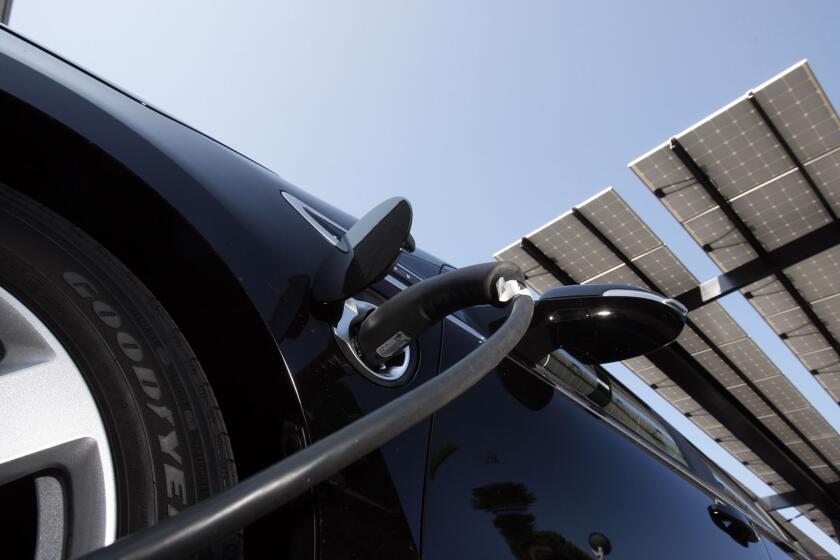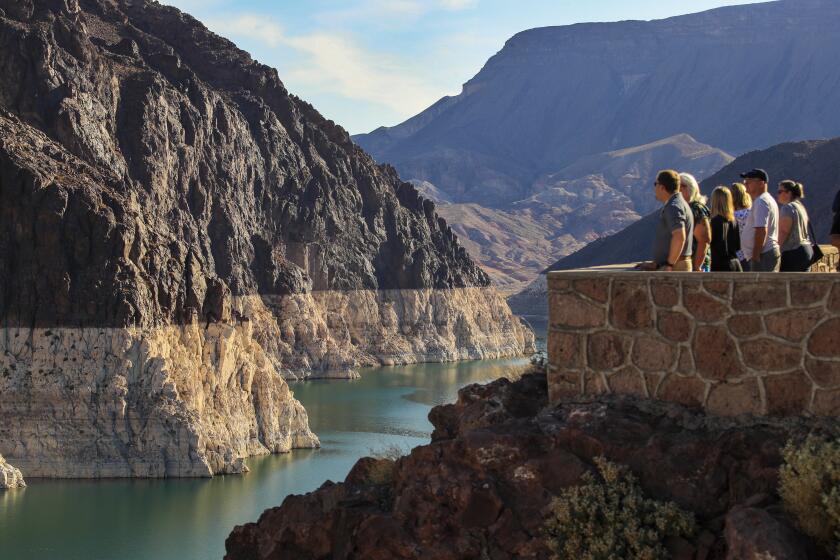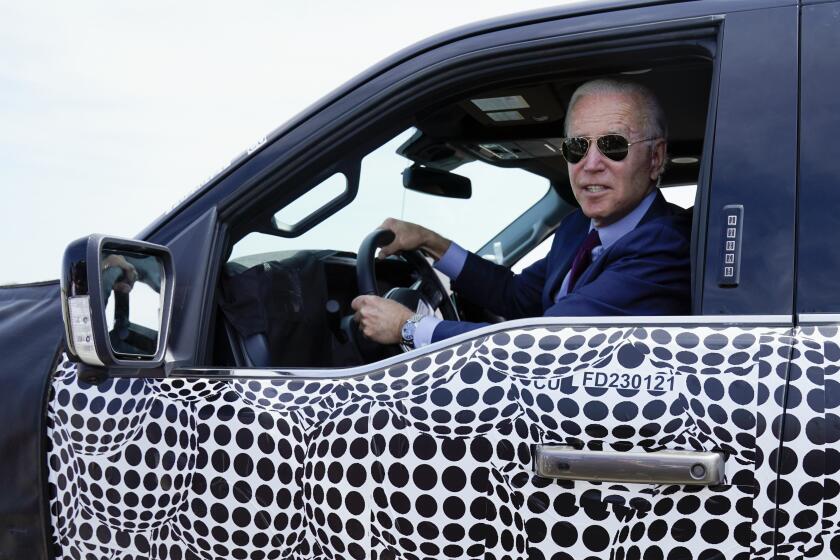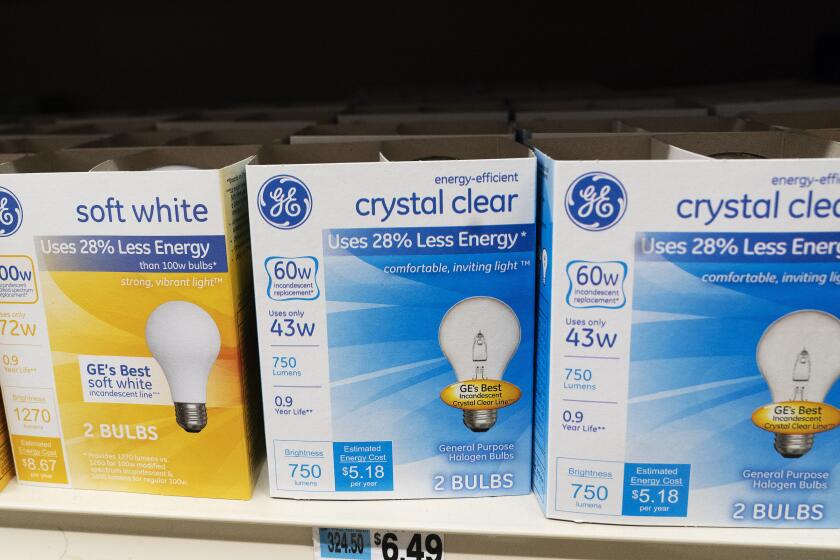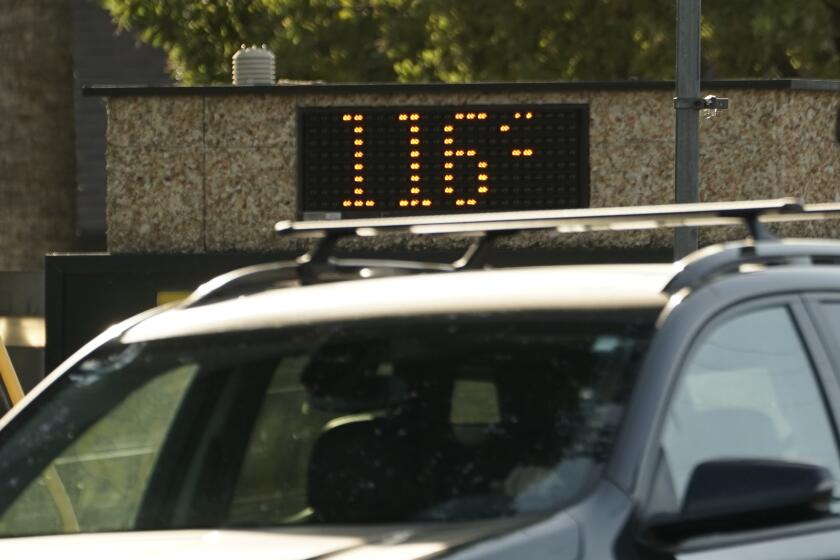Five takeaways from the first year of America’s biggest climate law
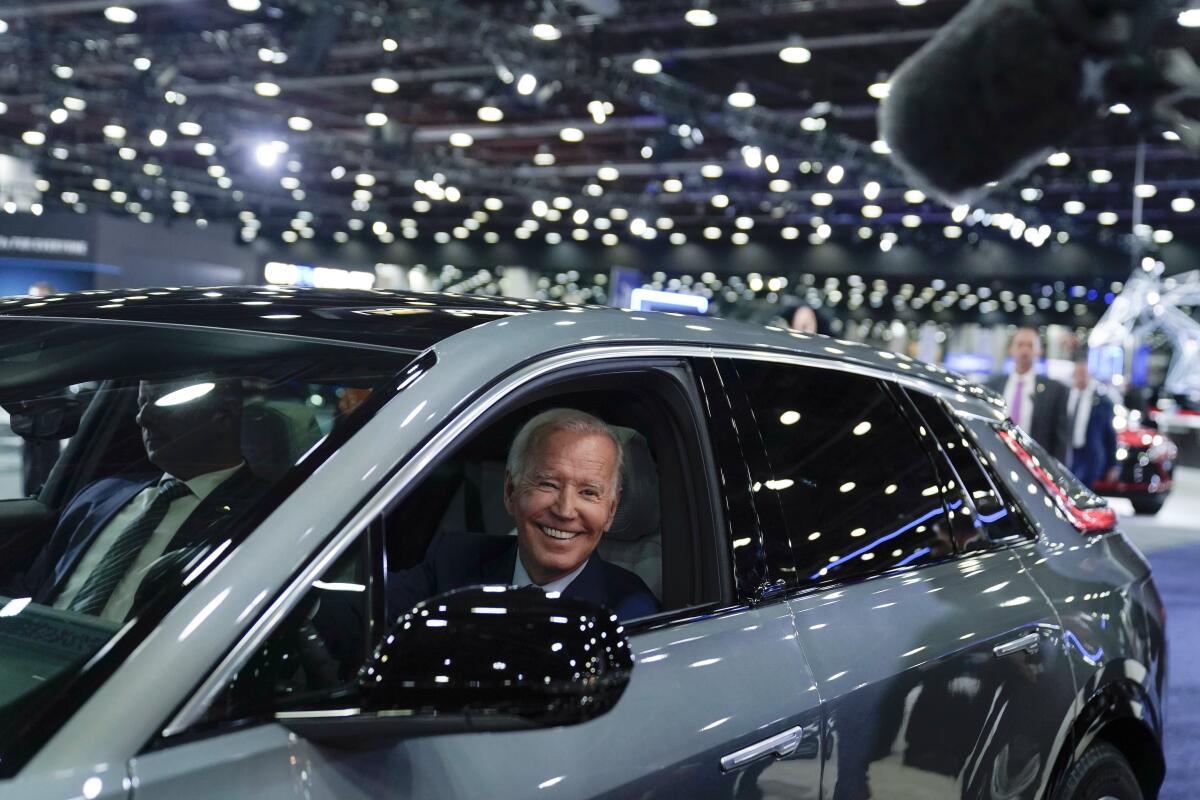
- Share via
One year ago, President Biden signed the Inflation Reduction Act, the nation’s most significant action yet to combat climate change. The law dedicated $369 billion to boost renewable energy production and manufacturing, help homeowners install rooftop solar panels, switch to efficient electric appliances, drive up sales of electric vehicles and get the U.S. closer to meeting Biden’s goal of cutting greenhouse gas pollution in half by 2030.
The array of new tax credits, rebates and incentives has started a remarkable transformation from a fossil fuel-based economy toward one powered by renewable energy like wind and solar. Here are five takeaways of what’s working so far — and what’s not.
It’s becoming clearer to some environmental leaders that fossil fuel companies have no real plans to change in response to the climate crisis. The only way forward is without them.
1. Domestic clean energy is booming
More than 200 major clean-energy projects and $86 billion in private investments have been announced since the law was signed, most of them manufacturing operations in the electric vehicle, battery and solar industries, according to an analysis by E2, a nonpartisan business group.
The South and Midwest are leading the nation in the number of new projects, which include a cluster of solar manufacturing facilities, electric vehicle plants, battery gigafactories, in an area stretching from Michigan to Georgia now dubbed the “battery belt.”
Republican-held congressional districts are reaping the greatest benefits, accounting for 18 of the top 20 districts for clean energy investments, according to the report. It’s ironic that the law passed without a single Republican vote.
A recent announcement by GM to use vehicle-to-home technology in all of its electric models is great news. But this feature should be standard requirement for all automakers.
2. The benefits are starting to spread
It’s heartening to see GOP lawmakers, who opposed the IRA on the grounds that funding environmental priorities would hurt the economy, now praising or even taking credit for the projects in their states and districts.
It’s hard, after all, to campaign against new factories and good-paying jobs in your district, or against your constituents saving money on their vehicle and appliance purchases and energy bills.
That portends well for the durability of the law, and its potential to build public support over the next decade. Recent polling shows that two-thirds of Americans think the federal government should prioritize production of wind and solar power, but Republicans still remain largely unconcerned about the threat of climate change and less supportive of renewable energy.
Editorial: Say goodbye to grass that’s only there for looks. California can’t afford to waste water
California’s water supply has become too low to continue irrigating extremely thirsty landscaping at malls, office parks and other places that exist only for looks, not for recreation or other use.
The wide reach of the IRA’s investments and incentives could help break through the political polarization and solidify the already strong economic case for investing in renewable energy, electrification and efficiency projects.
3. EV incentives are too complicated
If the revamped electric vehicle tax credits that took effect earlier this year are an indication, it’s going to be a bumpy road for other incentives on, say, heat pumps and induction stoves once states start to distribute them over the next year. Of the dozens of electric vehicles on the market, only a few are eligible for the full $7,500 federal tax credit that’s supposed to propel a rapid consumer shift toward zero-emission vehicles.
That’s because of onerous vehicle and battery manufacturing and sourcing restrictions in the law that require qualifying vehicles to be assembled in North America and built with specific percentages of battery parts and critical minerals from the U.S. or its partners. They’re intended to push manufacturers to build domestically and support American job, a worthy goal.
But right now, the complicated constraints on these credits are hindering the shift to zero-emission cars, and that’s a problem because transportation is the nation’s biggest source of planet-warming pollution.
It’s terrible for consumers as well and undermines the message that everyone should dump their gas guzzlers soon. President Biden should figure out how to expand incentives for more electric vehicles.
As additional incentives become available, state and federal officials need to make sure those programs are as consumer-friendly as possible so that homeowners replacing their furnaces, water heaters, dryers and stoves don’t miss out on money-saving rebates by switching to more efficient electric models simply because they’re not aware of them.
4. Few Americans know about it
The lack of public awareness about the inaptly named law, which has much more to do with energy and climate than inflation, is also presenting an obstacle to shifting the U.S. toward a zero-emission economy.
A year after its passage, 71% of Americans say they have heard “little” or “nothing at all” about the Inflation Reduction Act, according to a recent Washington Post-University of Maryland poll. Healthy majorities support the law’s expanded tax credits to manufacture and install solar panels and buy heat pumps and EVs, but 57% still disapprove of Biden’s handling of climate change. That points to a disconnect between the climate actions Americans support and their perception of Biden’s policies.
Public support could grow over the law’s decade-long implementation as its benefits spread, but it’s not a certainty. Solar, wind and other forms of renewable energy are contending with well-organized opposition and misinformation campaigns backed by Republicans and fossil fuel interests.
5. It’s not enough
The Inflation Reduction Act is the biggest investment in climate action in U.S. history, but it pales in comparison to the scale of action needed to keep global warming from reaching disastrous levels. Even if every clean energy incentive program in the law is taken full advantage of, the U.S. still won’t be able to cut carbon pollution in half by 2030 or deliver on the commitments under the international Paris climate agreement. And that’s an unacceptable future.
We phased out these energy-sucking lamps with little trouble or complaint. It shows we have little to fear from the end of other outdated technology such as gas cars and stoves.
Not only do leaders at all levels of government need to keep boosting renewable energy investment, year after year, they need to get serious about phasing out the extraction and consumption of fossil fuels by adopting stringent policies that can’t be subverted by oil, gas and coal companies. We also need to grow the clean energy workforce, including electricians to work on solar and wind farms and contractors to install zero-emission equipment in buildings.
Unfortunately, serious Congressional climate action just isn’t in the cards as long as the House remains controlled by Republicans, who have used their power to try to kill many of the law’s clean-energy provisions.
An Arizona congressman has proposed fixing that. It makes sense considering how destructive, and increasingly common, high temperatures have become.
For now, that leaves the president largely on his own to use his executive authority. But Biden has stopped short of declaring a climate emergency, a step environmental groups, climate advocates, youth activists (and this editorial board) have urged. That declaration could help unlock additional tools and resources to speed up renewable energy development, restrict fossil fuel projects and respond to climate-fueled disasters such as heat waves, floods and wildfires.
What should be clear, even one year later, is that the president and every elected and appointed leader in the U.S. must do everything in their power to protect the viability of planet. This law, as groundbreaking as it is, should only be the beginning.
More to Read
A cure for the common opinion
Get thought-provoking perspectives with our weekly newsletter.
You may occasionally receive promotional content from the Los Angeles Times.

